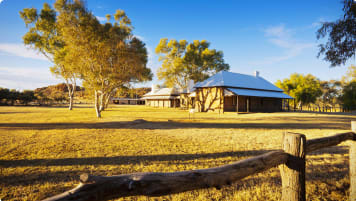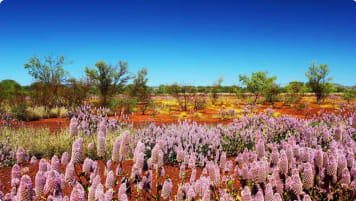The Ghan Railway
Article about the Ghan railway line serving Adelaide, Alice Springs and Darwin. Supporting small group educational tours for senior couples and mature solo travellers ready to explore the Aboriginal and colonial history of Outback Australia.
23 Sep 21 · 10 mins read
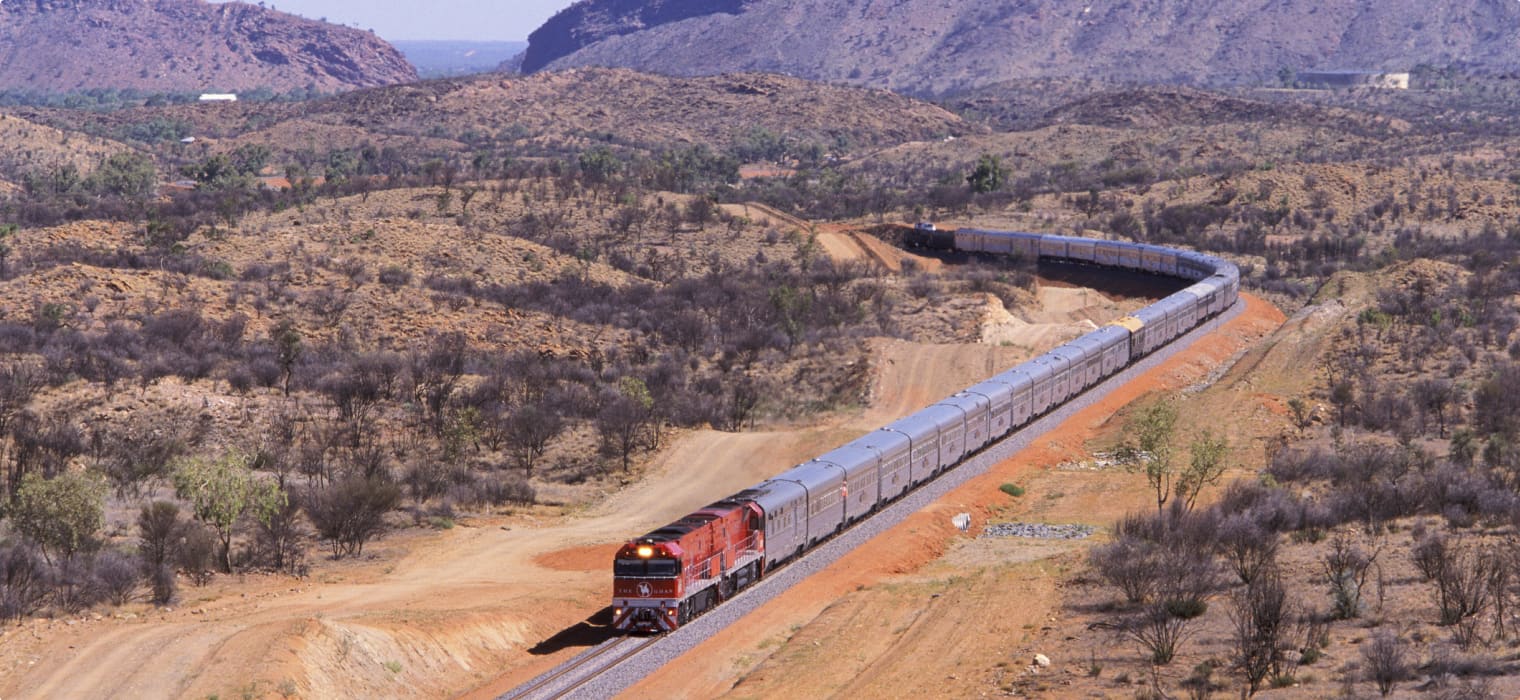
History of The Ghan Railway
By Marco Stojanovik
In 1862, the Scottish explorer John McDouall Stuart became the first European to cross the Australian mainland from north to south. A significant achievement, the route he established in turn became the basis of two major cross-country linkages. The 3,000km long Australian Overland Telegraph Line, completed in 1872, connected Port Augusta with Darwin and thereby Australia overseas to England and the wider world. And The Ghan Railway – named after the Afghan cameleers who helped to explore and settle the country’s remote interior – connected Adelaide and Darwin, via Alice Springs and Katherine,
The latter, however, took 126 years to go all the way. Beginning in 1878, at first construction extended north, following Stuart’s route from Adelaide, reaching the railheads of Farina in 1882, Marree in 1884, and eventually Oodnadatta in 1891. Here it stayed for almost 40 years, before being extended to Alice Springs in 1929. Sections of the line was then moved approximately 160 kilometres west of the former line in 1980 to avoid floodplains where the original line was often washed away during heavy rain. However, due to financial constraints, the line was not finally connected to Darwin until 2004.
The legendary Ghan train is still operational today as a popular tourist attraction, widely regarded as one of the world’s great train adventures. Over the three-day Ghan rail journey, passengers enjoy the comforts of modern rail travel, with private sleeper cabins and elegant dining carriages, from which they get to experience the stunning changing Australian landscape. The remnants of the Old Ghan line and abandoned railway towns are also popular amongst tourists, visited along the amazing Oodnadatta Track.
Odyssey Traveller visits the historic sites along the Old Ghan during our small group tour of the Oodnadatta Track and Flinders Ranges for senior and mature travellers as couples or solo travellers. This article explores the history of the Afghan cameleers and The Ghan Railway to assist your tour. Much of the information is drawn from John Bailey’s Mr Stuart’s Track.
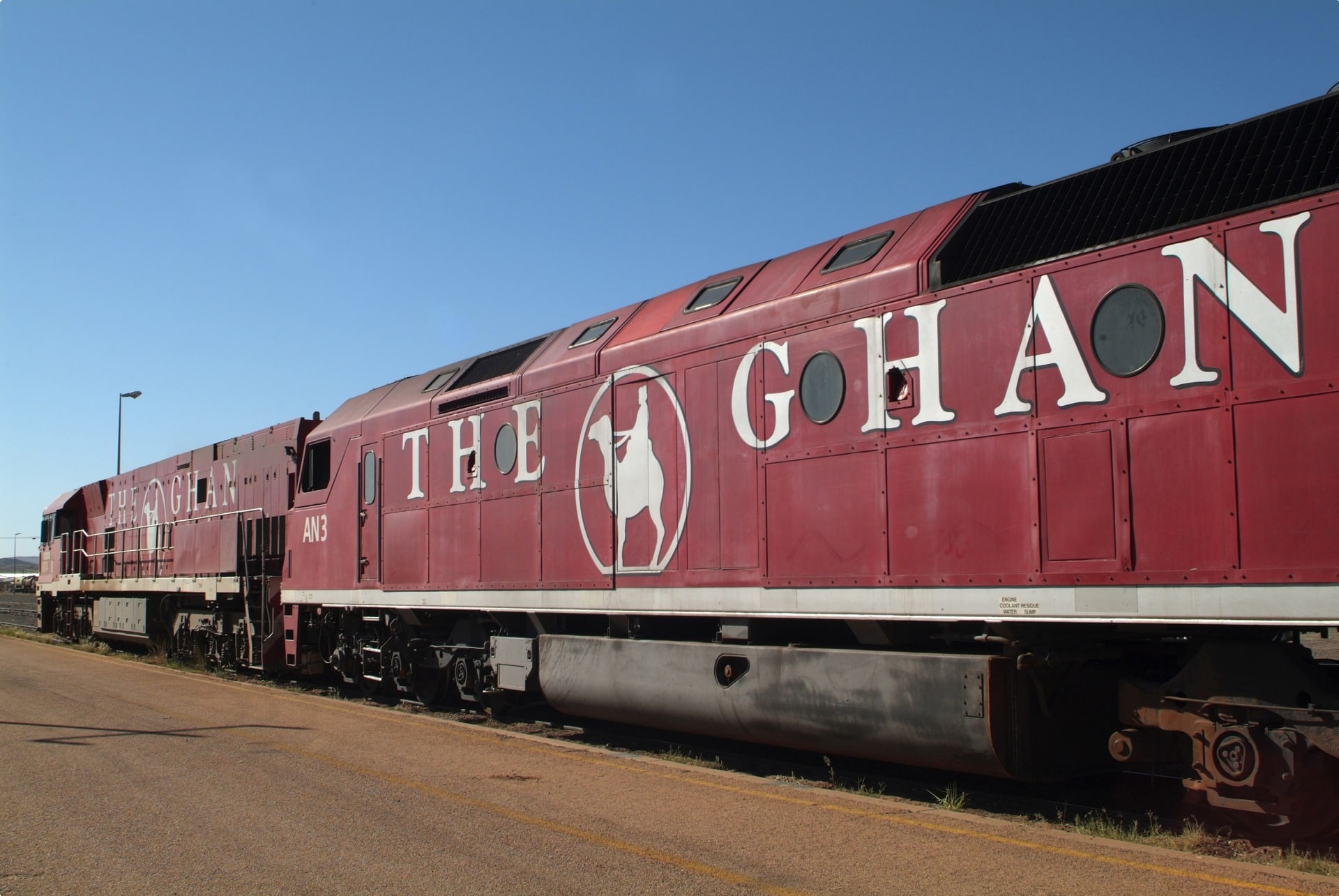
Afghan Cameleers in Australia
Afghan cameleers, also known as “Afghans” or “Ghans”, played a vital role in constructing modern Australia. Working in Outback Australia from the 1860s to 1930s, the camel drivers opened lines of supply, transport, and communication between isolated settlements, all the while enriching the cultural landscape.
Although commonly referred to collectively as “Afghans”, the camel men came from different ethnic groups and from vastly different places such as India, Iran, Turkey, the Middle East, and North Africa in addition to Afghanistan.
The first Afghans were brought to South Australia in 1838 to assist with the early exploration of the interior as experienced camel handlers. Their camels were ideally suited to Australia’s desert environment, too harsh for horses and buffaloes.
Imports stopped after the first arrival, not beginning again until the late 1860s after central Australia had been opened up by explorers. At this point the Afghans and camels began to arrive in their thousands to provide vital support to the pastoral industry, communications and settlement. Between 1870 to 1900, it is estimated that approximately 20,000 camels and over 2,000 cameleers came to Australia, with a vast network of camel train routes spreading out across the interior of the continent.
Without them the development of outback Australia would have been extremely difficult if not downright impossible. They played a vital role in the economy, transporting goods, mail, water, tools, equipment, and construction materials to remote towns, mines, and stations. They also helped with the construction of major infrastructure projects including the Overland Telegraph Line and railways and acted as guides for several major expeditions.
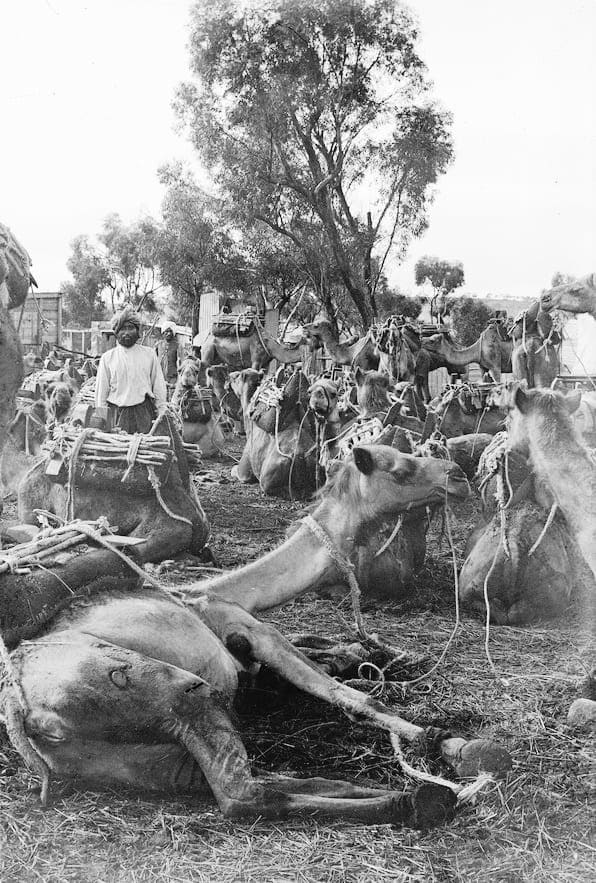
The cameleers worked across large distances, as far as Wyndham and Newcastle Waters, with main routes following the Overland Telegraph, the Birdsville Track in Queensland, and the Oodnadatta and Strzlecki Tracks in South Australia. Lesser tracks strayed from the main routes across stony deserts and mountain ranges to visit lonely cattle stations, isolated missions, and mining camps. In fact, there were few places within the immensity of the inland which were beyond their reach.
Many rest stations and centres such as Marree were established along the way, creating a permanent link between the coastal cities and isolated communities inland or further north.
The Afghans also played a major role in establishing Islam in Australia. Though they were from a variety of different countries and spoke an array of languages, they were generally united by their Muslim faith. Islam as such became a source of solace and a means of building community. Mosques dot the Australian interior, including Australia’s first mosque at Marree, built 1861, and the 1891 Broken Hill mosque.
The Afghans and their camels served the people of the inland until well into the twentieth century, until eventually replaced by motor vehicles in the 1920s. The advantage of trucks was overwhelming, easily moving 50 bales of wool 280km a day, while the camel train would be lucky to cover the same distance in a week. Initially the cameleers tried to compete, but by the end of the decade it was clear their heyday was over.
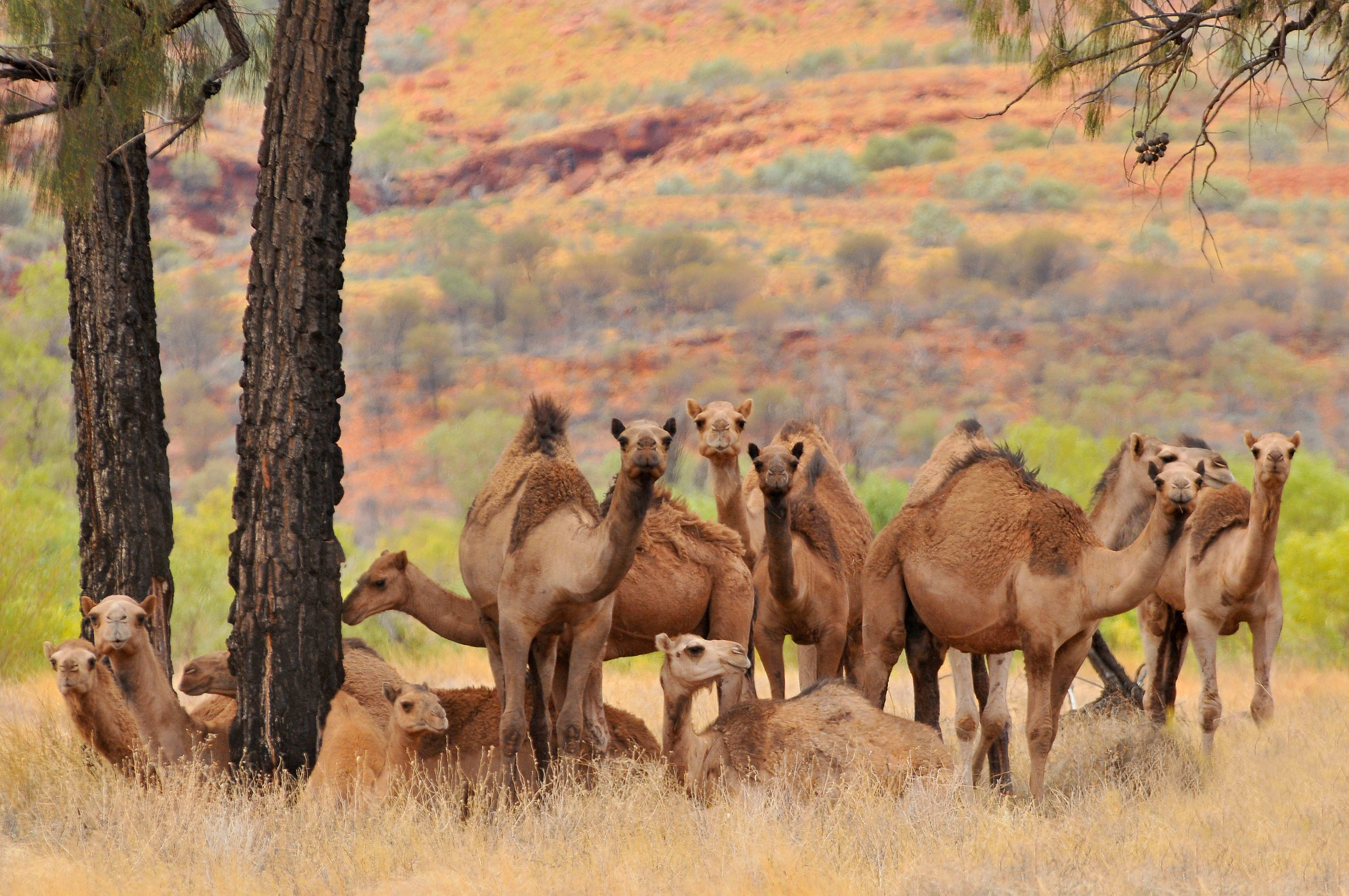
The Original Ghan Railway
Afghan labourers and their camels played a significant role in the construction of the original Ghan Railway, then known as the Port Augusta to Government Gums Railway. Construction began at the height of the railway boom in 1878, under the orders of South Australian premier William Jervois, in the hope to develop the pastoral and mining potential of the country’s interior. A year later, after the first 40km of track had been paid between Port Augusta and Quorn, the first service began.
Camel drivers from Afghanistan built settlements of tin and canvas (dubbed ghantowns) next to railheads as the line was then extended deeper into the interior, reaching Beltana in 1881, Farina in 1882 and Marree in 1884
After some years, the railway was pushed further north to past Callanna, Alberrie Creek, Curdimurka, Coward Springs, Strangways Springs, William Creek, Anna Creek, Box Creek, Edwards Creek, Warrina, Algebuckina, and Mount Dutton until finally reaching Oodnadatta in 1891. Oodnadatta would remain the railhead for the next 38 years.
Here, the Afghans built a new ghantown and a tin mosque and planted date palms. During the 1890s some 400 camels were stationed there tended by the cameleers. Others remained at Marree, which continued as the supply points for the Birdsville Tracks to the north-east. Over the time railway came to be known as The Ghan Express, then the Ghan, due to so many of the workers and passengers being Afghans.
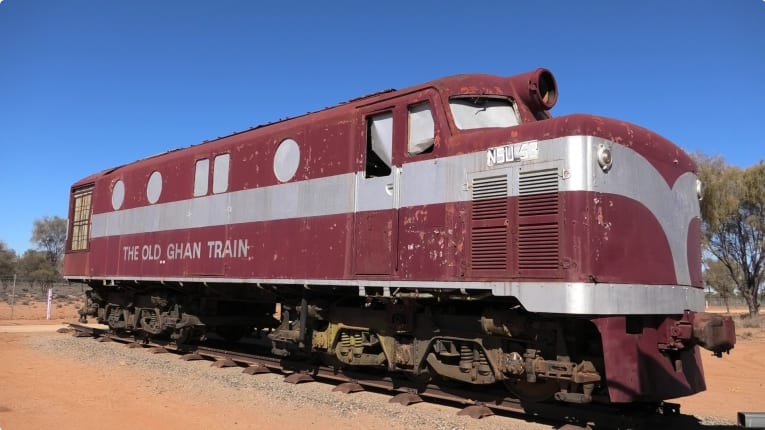
John Bailey writes that the Ghan was “one of the most affectionately regarded trains in Australia… a quirky, friendly sort of line that ran according to its own schedule of good-enough arrival times.”
Moving at an average of 19km per hour and only running during daylight hours, the journey from Port Augusta to Oodnatta during this time took three days. Overnight stays were done at Quorn and Marree, where passengers enjoyed overnight stays at hotels and hearty breakfasts of steak and eggs. Along the journey, one would experience hot winds, dust, the clack of wheels, and bum-bumbing seats.
Passengers had to take other means if they wanted to go further inland from Oodnadatta. Getting to Alice Springs, for example, would take 18 days in a buggy or bouncing along the top of a camel.
Nevertheless, the Ghan provided an important transport route into Central Australia. With the help of the many Afghan cameleers, it allowed hundreds of people to access the relatively unknown part of the country and provided goods and services to the many isolated stations.
Work on an extension of the railway line from Oodnadatta to Alice Springs (then named Stuart) began in 1926 and was completed in 1929. By this time, a sleeping car was provided, and the train could continue without stopping overnight, completing the entire trip in two days.
The New Line
The original railway line followed the same track as the Overland Telegraph, more or less following the same path taken by Charles Sturt during his 1862 crossing of Australia. In doing so, it went through country that experienced some of the most extreme conditions in Australia, including extreme heat and flash flooding.
Not surprisingly, the railway line often suffered delays and washouts, with passengers marooned for several days. As such, the first flatcar behind the tender would have to always carry tools and spare sleepers so that the passengers and crew could repair the line and allow the train to continue on its journey. Despite the problems, the service’s route was long tolerated because it was the only with large quantities of water available required to power the steam locomotives. Indeed, it followed the natural artesian springs that surface from the Great Artesian Basin, so providing water at regular intervals.

As diesel replaced steam, however, the need for water was diminished and the line was able to be moved to a more reliable route. Eventually as such, in October 1980, a new standard gauge line opened between Tarcoola and Alice Springs, approximately 160 kilometres west of the former line.
The last narrow-gauge Ghan pulled out of Marree on 25 November 1980, marking the end of an era and a significant chapter in South Australia and Northern territory’s railway history. As the first Ghan on the new line departed Adelaide a couple weeks later on 4 December, a new chapter had begun.
Connecting to Darwin
From the beginning, it was always intended for the Ghan to extend from Adelaide all the way to Darwin. When South Australia established Port Darwin in 1869, many envisioned it as the entrepot of Asia and beyond. However, a decade later exports were still insignificant and its huge, pleasant harbour remained empty of visiting ships. The problem, it seemed, was it isolation, effectively cut off from the rest of Australia. If Port Darwin was to become a great mercantile port, it had to be linked by rail with the population centres of Brisbane, Sydney, Melbourne, and Adelaide.

Accordingly, the South Australian government passed legislation authorising the construction of the first 235km of the line from Port Darwin to Pine Creek in 1883. However, while linking cattle stations, buffalo camps, peanut farms and gold mines, the new line did little else. Never on time and never going anywhere, it was dubbed the Never-Never Line.
It was clear that for the Never-Never line to be viable, it would have to be extended to link up with the southern network. By 1910, the South Australian government, however, had already poured £6 million into the Northern Territory and was yet to see sufficient returns. Accepting the territory was likely to be a financial burden for still some time to come, South Australia surrounded the whole lot to the Commonwealth Government in 1911 for £3.9 million.
The Commonwealth then committed to constructing the Adelaide to Darwin line, thereby connecting almost 3000 kilometres between southern and northern Australia. However, by the time the extension to Alice Springs was completed, the Ghan was failing to make any profit and the plans had to be suspended indefinitely, the two lines still separated by 1000km.
Then, in the early 1940s, the Stuart Highway (honouring John McDouall Stuart) was created between Adelaide and Darwin. In 90 days between September and December 1940, then highway was built between Alice Springs and Darwin as part of the war effort. Then by 1943, it was sealed with bitumen and made an all-weather road down to the South Australian border. Measuring 18 metres wide, the highway was progressively upgraded, sealed and extended all the way to Port Augusta.
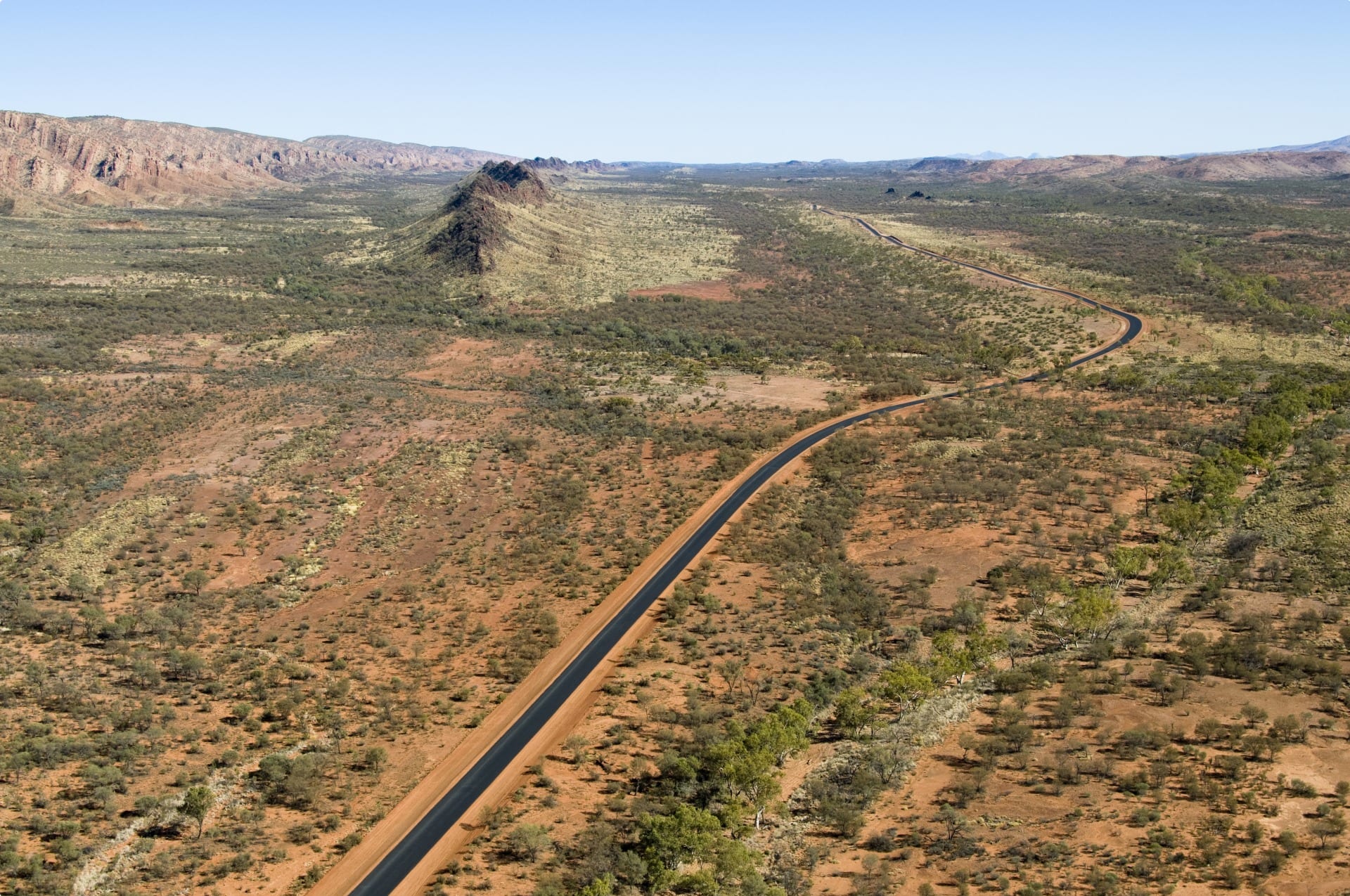
Now, not only was the Never Never line a slow train to no particular destination, but it also had a significant competitor in the Stuart Highway. As such, the line closed down permanently in 1976.
Even so, the want to build a railway between Adelaide and Darwin never disappeared, with 19 commissions and inquiries conducted into its feasibility between 1913 and 2001. Yet, every time it was deemed to be too expensive.
That was until a 1994 inquiry headed by the former New Souths Wales Premier Neville Wran reported that the line would be viable by the turn of the century. This was enough to get the governments of South Australian and the Northern territory active, planning and committing to building the $1.3 billion line. Of this $800m would come from private backers and the rest from the State, Territory and Federal governments. It was to be the second ever largest civil engineering project tin Australia after the Snowy Mountains Scheme.
Construction of the line began in July 2001 in Alice Springs and the last rail laid in Darwin in September 2003. Then, on 15 January 2004, the first train to cross the continent left Adelaide for Darwin, cheered on by people at station platforms along the way.
Oodnadatta Track
Today remains of the Old Ghan railway line can be seen along the Oodnadatta Track. This is one of the greatest outback tracks in Australia, an accessible and engaging 617km drive through the stunning desert plains of South Australia. Some 600 km north of Adelaide, the maintained unsealed road passes from Marree in the south-east to Marla in the north-west via Oodnadatta. It follows a traditional Aboriginal trading route along a line of natural mound springs feeding from the Great Artesian Basin – the same route taken by the explorer John McDouall Stuart on his third expedition in 1859, and that chosen for the Overland Telegraph Line and old Ghan railway line.
When the Ghan Railway was moved to its current location in 1980, many of the once bustling small towns along the original track were abandoned. Remnants of these towns, as well as the many railway sidings and the Overland Telegraph repeater stations can still be found along the track today. Some of the best preserved are at the Coward Springs Campgrounds (complete with natural artesian spa), Curdimurka and the “Old Peake” ruins.
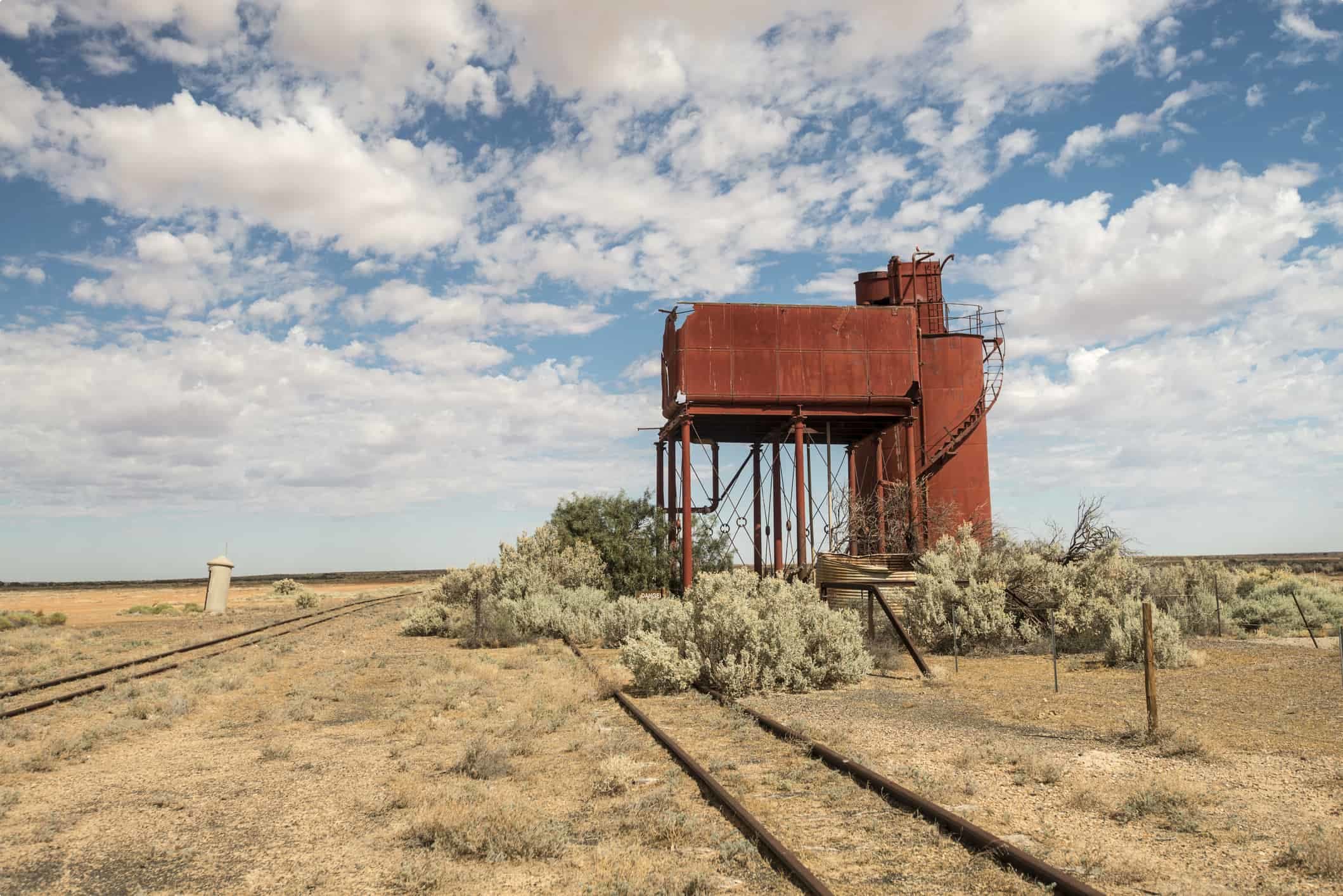
These highlights are accompanied by the natural sites of different landforms, plants and natural springs, as well as the spectacular Lake Eyre – the largest salt lake in Australia.
Tour of The Ghan Railway
Odyssey Traveller visits remnants of the Old Ghan Railway during our 18 day small group tour of the Oodnadatta Track and Flinders Ranges. This Australian outback adventure takes you to the well-known Old Ghan sights along the Oodnadatta track including Curdiminka and Farina, as well as an in-depth tour of the majestic Flinders Ranges – Wilpena Pound and Flinders Ranges National Park – but also to lesser-known gems, including Brachina Gorge, Parachilna Gorge, and Bunyeroo Gorge, which we see and explore on a collection of day trips.
Our small group Australian Outback tour allows you to see and explore the ancient Flinders Ranges landscape – more than 600 million years old. We learn about the Aboriginal culture and history, dating back 60,000 years, and reflect on the history of European settlement in the 18th and 19th centuries along the way at Oodnadatta, William Creek, and Marree, as well as the ghost towns of Curdimurka and Farina where the legendary stockman Stanley Kidman brought his cattle out from the Channel country. We also see a diversity of abundant natural wildlife all in their natural habitat or South Australia’s extraordinary vast ancient landscape.
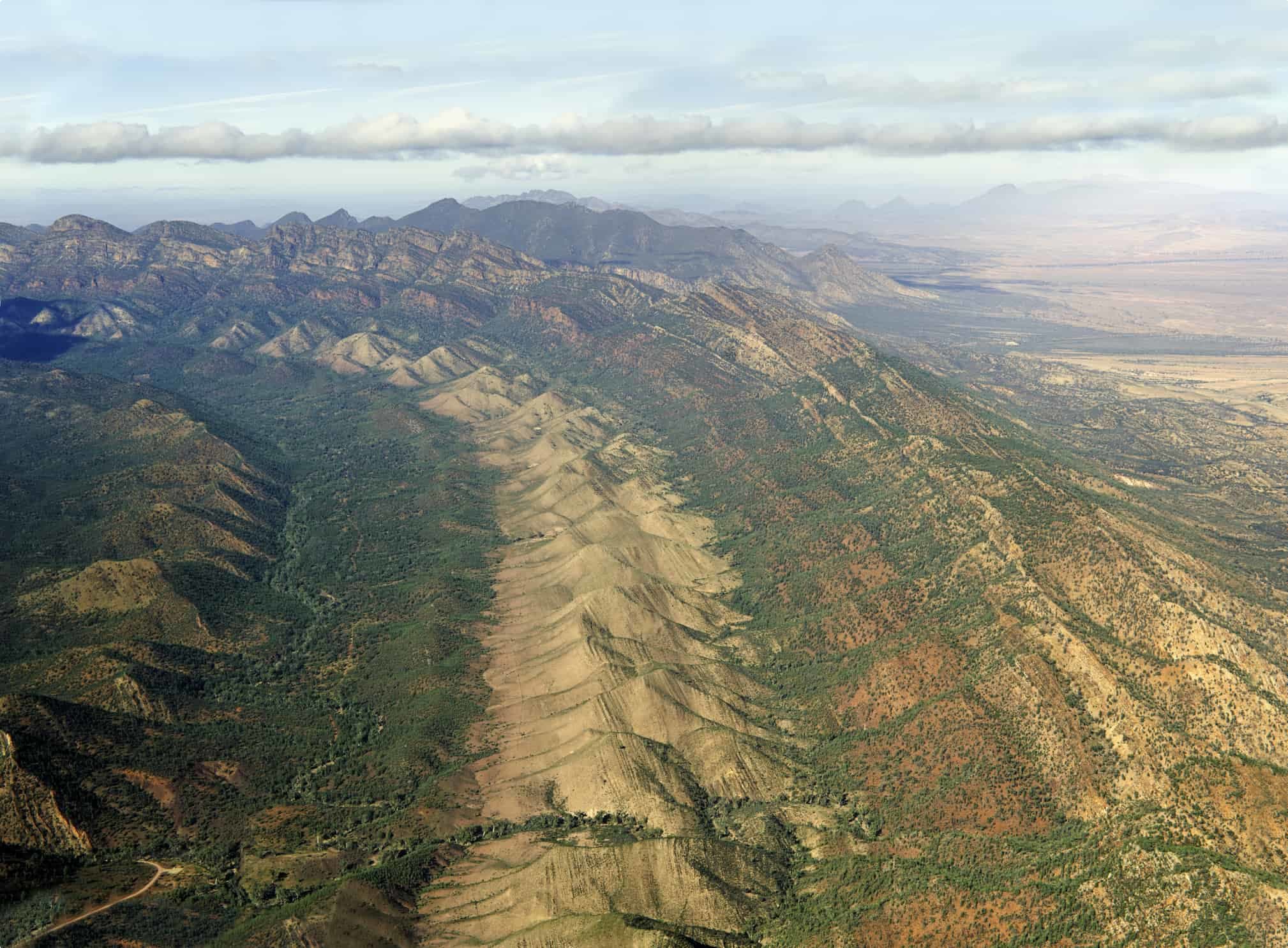
Articles about Australia published by Odyssey Traveller:
- The Kimberley: A Definitive Guide
- Uncovering the Ancient History of Aboriginal Australia
- Aboriginal Land Use in the Mallee
- Understanding Aboriginal Aquaculture
- Mallee and Mulga: Two Iconic and Typically Inland Australian Plant Communities (By Dr. Sandy Scott).
- The Australian Outback: A Definitive Guide
For all the articles Odyssey Traveller has published for mature aged and senior travellers, click through on this link.
External articles to assist you on your visit to the Oodnadatta Track and the Flinders Ranges:
Related Tours
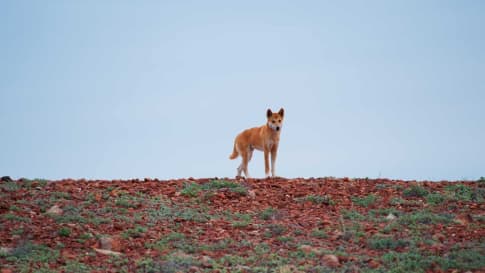
days
Apr, May, Jul, Aug, Oct +2Small group tour of Australia's Flinders ranges
Visiting South Australia
Escorted small group tour of the Flinders range in South Australia from Adelaide. Learn about Coober Pedy, Wilpena pound and water system of Lake Eyre as we explore and learn also about the history of the people who explored the Flinders.

days
Feb, Mar, Apr, May, Jul +2Small group Motorcycle tour of South Australia
Visiting South Australia
Escorted small group tour for senior motorcycle riders of the Flinders range in South Australia from Adelaide. Learn about Coober Pedy, Wilpena pound and water system of Lake Eyre as we explore and learn also about the history of the people who explored the Flinders.
Related Articles

Australian Outback Cattle King
These mature and senior programs for couples and senior travellers explore the outback Sidney Kidman sought to tame in the Channel country to the Birdsville track, Marree and Farina. Our escorted small group tours of the Australian interior explore history, cultures and landscapes that we experience as we travel from the previous time to the contemporary.

Camels of the Australian Outback
Camels of the Australian Outback Here’s a trivia question : where are the world’s only wild single-hump (dromedary camel) camels found? If you guessed Arabia or the Sahara, you’d be wrong. In fact, the answer…

Charles Sturt and the search for the inland sea
Sturt is an iconic British explorer.From this article escorted small group tours for mature and senior travellers may join as couples or solo travellers programs that explore and share Aboriginal history, the landscapes and culture of the Australian outback with Stuart and Eyre, Burke and Wills and more.

Expeditions of John McDouall Stuart in the Flinders.
John Stuart was an explorer who mapped the Flinders ranges as well as a path through the centre of Australia. The principal road from Port Augusta to Darwin is the Stuart Highway. The Small group tour of the Flinders ranges spends time learning about Stuart.

Marree and the Railway Track, South Australia
Learn more about the importance of this outback town in the settlement of Australia. Visited as part of our small group package tours for mature and senior travellers, couples or singles this is a town with history close to the Birdsville track and the Oodnadatta track.

Oodnadatta, South Australia
Oodnadatta is an adaptation of an Arrernte word utnadata meaning 'blossom of the malga'. This town was part of a network of Aboriginal trading routes existing for tens of thousands of years. Learn and discover more on a small group tour of the Flinders ranges.

The Australian Overland Telegraph Line
Article on the Australian Overland Telegraph Line, that connected Port Augusta with Darwin and thereby Australia overseas to England and the wider world. Learn more on a small group tour for senior and mature couples and solo travellers visiting Central Australia including Uluru-Tjtuta.

The Birdsville Races
Article about the Birdsville races in Queensland for mature and senior travellers curious about Outback Australia. Join a escorted small group tour for mature and senior travellers to learn about Aboriginal and colonial history in central Australia. For couples and solo travellers.

The Oodnadatta Track, South Australia
Oodnadatta track follows a traditional Aboriginal trading route along a line of natural mound springs feeding from the Great Artesian Basin – the same route taken by the explorer John McDouall Stuart on his third expedition in 1859, and that chosen for the Overland Telegraph Line and old Ghan railway line. Explore and learn on small group tour for couples and solo mature travellers on a small group tour into the Outback.

